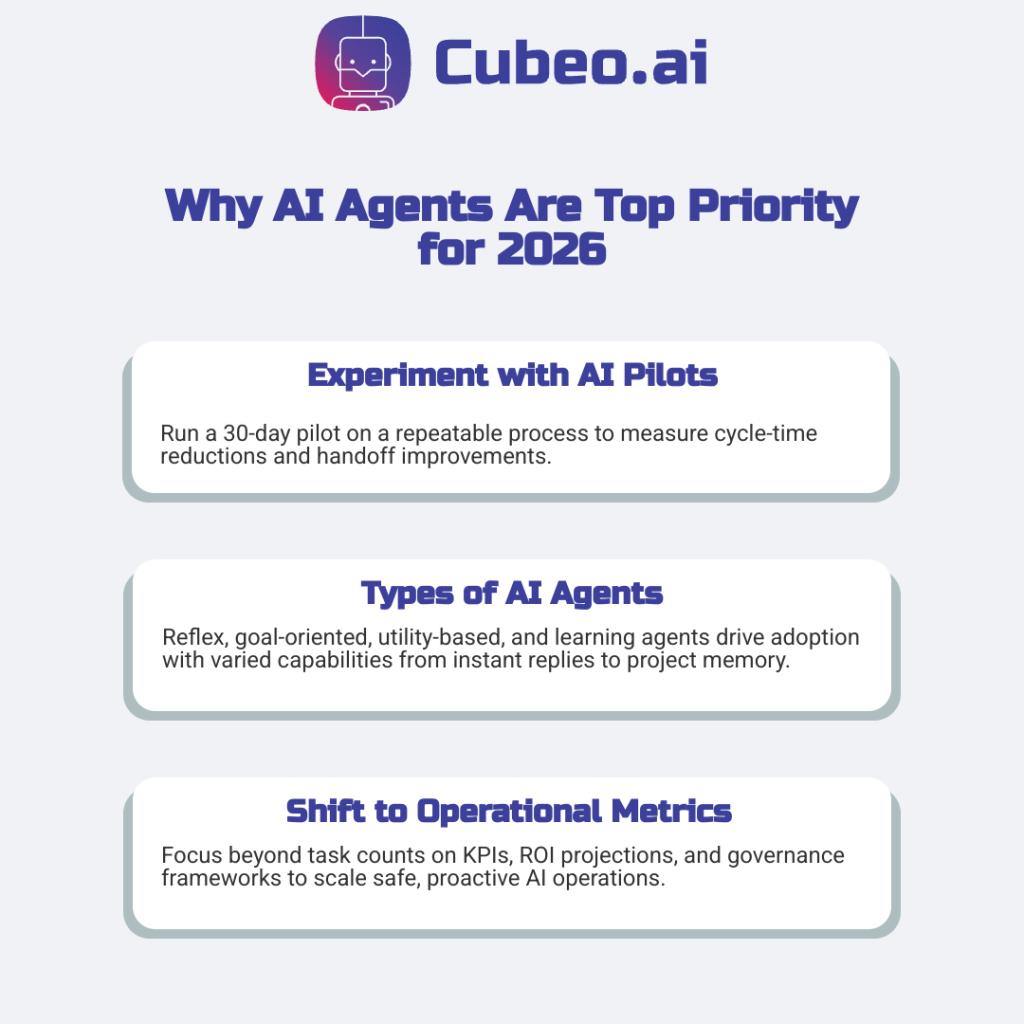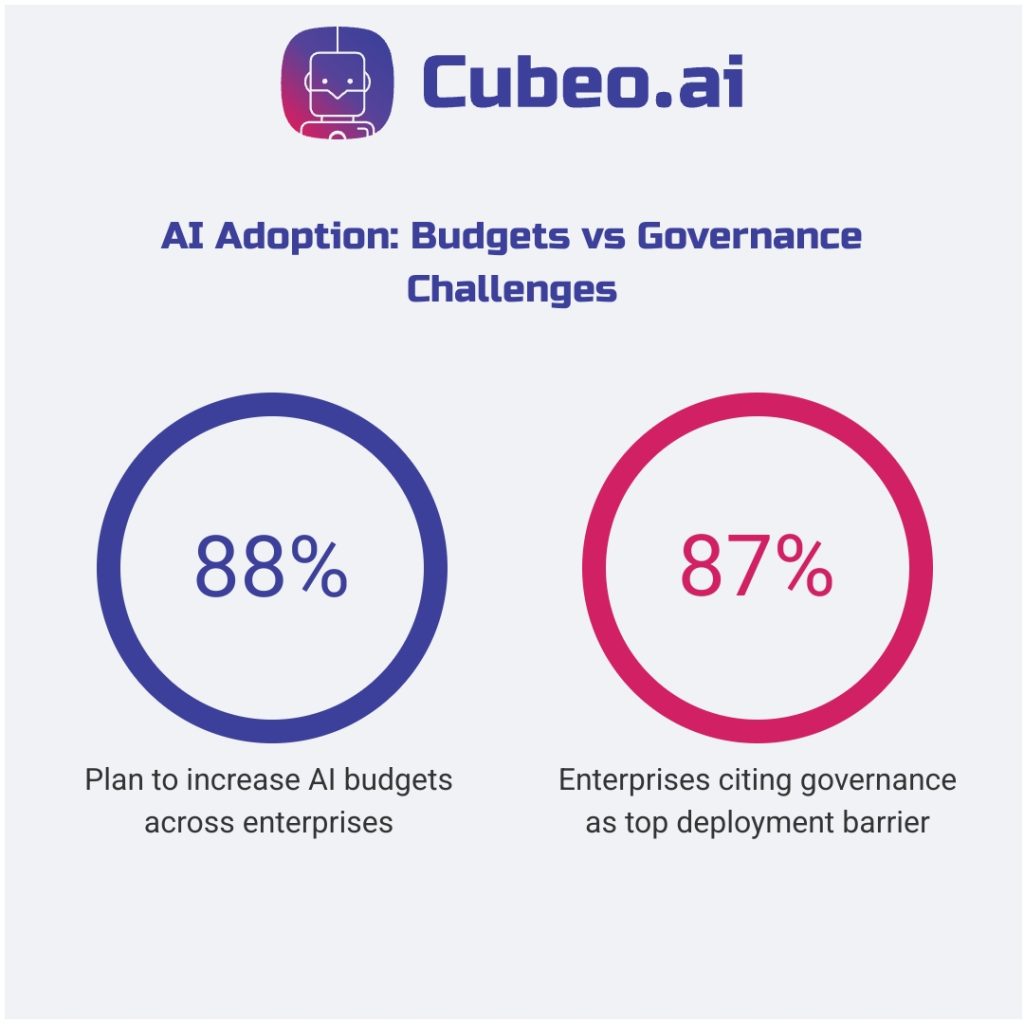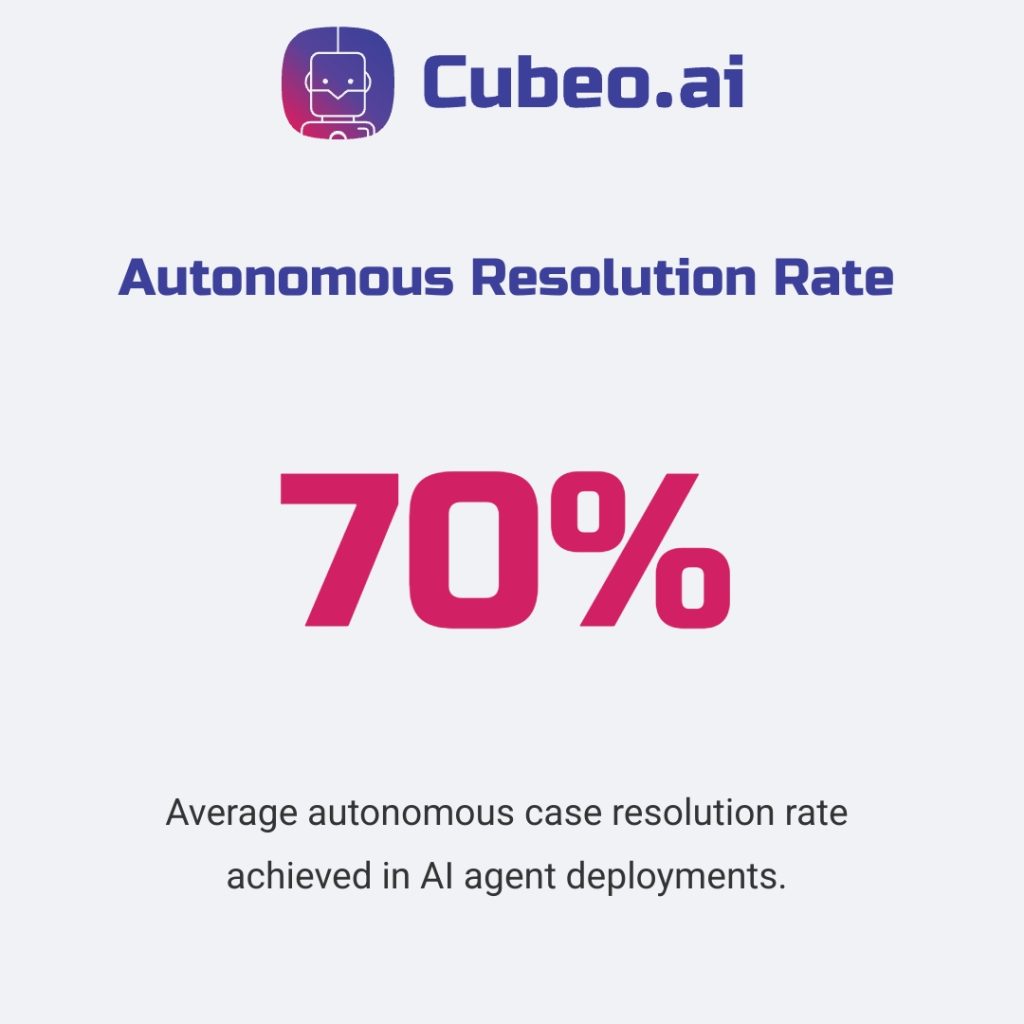PwC’s latest survey shows 79% of enterprises adopting AI agents, with 66% reporting productivity gains and 57% seeing cost savings.
That confirms AI agents, autonomous programs that sense, decide and act, are past pilot stage. 2026 is the tipping point where AI agents that act autonomously (systems that make decisions without constant oversight) move from experiments to essential business infrastructure.
Teams that scale do 3 things: pick a measurable outcome, add simple guardrails, and use no-code tools so cross-functional teams can own deployments.
This guide delivers 10 trends, each with one KPI and one guardrail, plus a 30-day no-code playbook to turn insights into measurable outcomes.
Pick one repeatable process and one cross-functional team to run a 30-day pilot.
Why AI Agents Are the Business Priority for 2026
If you run AI pilots, pick one repeatable process and measure cycle-time change in 30 days. That single experiment will show whether agents reduce handoffs or just add complexity.
AI agents shift your operations from reactive tools to proactive partners that initiate work, make decisions, and complete tasks independently. 4 types drive adoption: Reflex agents handle instant replies like chat responses. Goal-oriented agents manage multi-step objectives such as lead qualification. Utility-based agents optimize tradeoffs like budget allocation decisions. Learning agents maintain a “project notebook” memory that improves over time.
Enterprise integration estimates range from high 70s to mid-80s, with 62% projecting ROI above 100%. Companies shift budgets toward agents because they handle complete workflows rather than isolated tasks.
Technology maturity makes deployment safer. Better integration capabilities, governance frameworks, and orchestration systems (think “air-traffic control” for managing multiple agents) enable cross-functional teams to deploy at scale.
Teams are shifting from task counts to operational metrics. Specific KPIs and guardrails for each trend follow in the next section.

10 AI Agent Trends Reshaping Business in 2026
Investment reached $109.1 billion in 2024; 88% of companies plan to increase AI budgets, per the PwC survey above. These 10 trends define where that money flows in 2026.
Multi-Agent Dream Teams
McKinsey projects widespread adoption of collaborative agent workflows by 2026.
KPI to track: Team velocity and cross-agent handoff success rates (percent of tasks passing between agents without rework)
Guardrail: Establish clear role boundaries and escalation protocols
Goal-Oriented Agent Specialization
78% of organizations deploy goal-oriented agents for complex, multi-step objectives. These agents manage entire workflows from lead qualification through contract negotiation, maintaining context throughout extended processes without human handoffs.
KPI to track: Goal completion rate and time-to-objective metrics
Guardrail: Define clear success criteria and failure recovery procedures
Conversational Commerce Agents
Conversational agents personalize product recommendations and handle purchase objections in real-time, transforming browser behavior into completed transactions.
Guardrail: Implement purchase confirmation workflows and spending limits
RAG-Powered Knowledge Agents
Enterprise RAG adoption accelerated 340% in 2024. These “file-cabinet + spotlight” systems find precise information from company databases and present it with proper citations and context for decision-making.
KPI to track: Query accuracy and knowledge retrieval speed
Guardrail: Validate source quality and implement citation requirements
Tool-Integrated Execution Agents
Tool integrations yield 73% higher completion rates in trials. Agents connected to CRMs, calendars, and communication platforms complete tasks end-to-end rather than generating recommendations that require human execution.
KPI to track: Task completion rate and tool utilization efficiency
Guardrail: Audit tool permissions and implement approval workflows for high-risk actions
Governance-as-Code Frameworks
87% of enterprises cite governance as their top deployment barrier. No-code platforms with built-in compliance address this by embedding policy enforcement directly into agent workflows automatically.
KPI to track: Compliance score and audit trail completeness
Guardrail: Implement automated policy enforcement and regular compliance reviews
Real-Time Observability Dashboards
Observability dashboards cut issue detection from 4+ hours to under 15 minutes in trials. These systems monitor agent performance, detect anomalies, and provide debugging insights for rapid troubleshooting.
KPI to track: Mean time to detection and resolution speed
Guardrail: Set up automated alerts and define escalation thresholds
Agent-Mediated B2B Search
Analysts predict growing adoption of agent-mediated B2B searches replacing keyword queries. Buyers describe needs conversationally; agents match them with relevant suppliers, products, and pricing instantly.
KPI to track: Search-to-conversion rate and query resolution time
Guardrail: Ensure search result accuracy and implement bias detection
Sub-Second Response Optimization
Sub-second response rates become expected for high-frequency tasks. Customer service, pricing queries, and inventory checks require instant responses to maintain user engagement and competitive advantage in real-time interactions.
KPI to track: Response latency and throughput capacity
Guardrail: Implement performance monitoring and auto-scaling protocols
Ethical Transparency Standards
71% of users expect explainability for agent decisions in business contexts. Transparent decision-making builds trust and enables teams to understand, validate, and improve agent recommendations over time through clear audit trails.
KPI to track: Explanation quality score and user trust metrics
Guardrail: Provide decision audit trails and implement bias testing protocols

Your 30-Day Playbook to Deploy AI Agents Now
Stop planning and start building. This playbook gets you from concept to measurable results in 30 days using no-code platforms.
Quick 30-day sprint (one line per week):
- Week 1 (Days 1-7): Record baseline KPI, pick single process, map inputs/outputs, assign owners (Product = KPI, Ops = infrastructure, SME = validation)
- Week 2 (Days 8-14): Configure 1 agent in no-code platform, connect one tool, run smoke tests with human-in-the-loop checks
- Week 3 (Days 15-21): Pilot with 5-20 users, collect daily KPI and incident log, run A/B test if possible
- Week 4 (Days 22-30): Tune prompts/rules, produce one-page KPI trend report vs baseline, recommend scale/stop with ROI estimate
Minimum guardrails (implement by Week 1):
- Role-based access control and permission matrix
- Daily audit log with decision explanations for high-risk actions
- Approval gate for irreversible actions (payments, contracts)
Pick one outcome metric to move
Choose a single KPI that directly impacts your bottom line: cycle time, resolution rate, or cost per case. Establish SMART KPIs (Specific, Measurable, Achievable, Relevant, Time bound) with baseline measurements before deployment. Real deployments achieve 70% autonomous resolution rates and 25% conversion increases. Set realistic improvement targets: 15-30% cycle time reduction or 20-40% resolution rate improvement. Document your baseline in Week 1, then measure daily once agents deploy. Product owner tracks this KPI and reports weekly progress.
Select and configure your agent roles
Start with reflex agents (immediate rule-based responses) for simple tasks or goal-oriented agents (multi-step workflows) for complex processes. Define clear responsibilities, escalation paths, and success criteria for each agent role. Use no-code platforms to configure agents without technical overhead, enabling cross-functional teams to own the process.
Deploy with guardrails and measure results
Implement monitoring dashboards, approval workflows, and performance alerts from day one. Track your chosen KPI daily and document lessons learned for continuous improvement. By Day 30 produce: (1) one-page KPI trend vs baseline, (2) two prioritized fixes, (3) scale/no-scale recommendation with estimated ROI and required guardrails. Set up automated alerts for performance degradation and establish human-in-the-loop review processes. Deploy behind role-based access controls in Week 3, then gradually expand user permissions. Measured outcomes guide your scale decision with concrete ROI data.

Conclusion
AI agents are already delivering measurable business impact: enterprises report 55% faster decision cycles and 66% productivity gains, and the market projected to expand to $199B by 2034. Treat agents as infrastructure you can pilot now. Run a 30-day experiment: record baseline, configure one agent, measure one KPI, apply the guardrails in this guide, and decide whether to scale.



